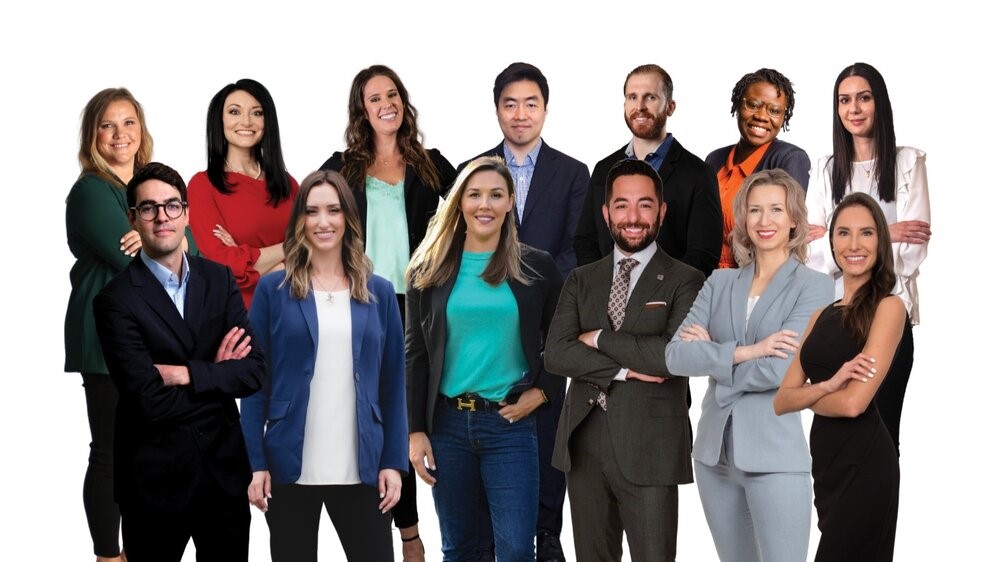
Rita E. Garwood,
editor-in-chief,
Monitor
Young leaders can breathe new life into an organization by sharing their ideas and advice. In interviews with 2021 Monitor NextGen Leaders, we asked an important question: What would be your top priority if you were appointed CEO of an equipment finance company?People First
Many of the young leaders agreed that people would be first on their lists. “Employees are what keep the wheels on the bus,” Britni Maine, assistant vice president and sales manager for the Small Business Solutions Group in the Business Capital Division at CIT, says. “I would want to hear from as many boots on the ground as possible to determine if there were any immediate changes that would make the largest impact.”
Mike Richards, a financial specialist at Philips Medical Capital, would adopt a servant-leadership approach, taking time to personally sit down and break bread with each person on his team get their feedback on the best ways to run the business. “You need to understand the people that you are serving,” Richards says.
“By listening and learning I would get to know the current leadership as well as all the levels below to get a complete picture,” Samya Jaber, a Quality and Controls Specialist at TIAA Bank, says. “I would find out what matters most to them and what their vision is and how we can improve that vision and how I can help.”
“It’s critical for any leader to understand the value and importance of keeping their employees happy,” Chelsea Wood, CLFP, vice president and funding manager at Wintrust Specialty Finance, says. “Showing them appreciation for all that they do to help the business grow and be successful, recognizing them when they go above and beyond, or even when they meet a set goal for themselves. Encouraging them to find that balance between work and life so they don’t let opportunities, adventures or other experiences pass them by.”
Culture and morale would be top priorities for Jessica Temes, vice president of portfolio risk management at First Financial Equipment Leasing: “How do we keep everybody motivated and happy? Organizations focused on employee needs first will see the value-add and strength in the focus of laying that foundation, which translates to the overall structure and success of the company.”
Angelina Frimpong, enterprise data architect at Amur Equipment Finance, would treat employees like family: “You want to make sure that you build a welcoming culture that is focused on growth of your employees.”
“If I were appointed CEO, I would make sure the organization’s culture was centered around empowering employees,” Chelsey Barron, vice president of sales operations at VAR Technology Finance, says. “I believe it is very important that our employees know their value. We should equip them with the training needed to perform their job at their fullest potential while also giving them the opportunity to grow. Encourage them to bring new ideas to the table and let them know the leadership team values their input and put their ideas into play.”
Investing in Development
“It’s important that we invest in our team members and continue with their progress, both professionally and personally,” Amy Majeskie, senior vice president and relationship manager at Wells Fargo Distribution Finance, says. “As a leader, that is a focus of mine, making sure I value their input, their expertise and continue to develop them.”
“You’re going to see a mass exodus of seasoned individuals retiring, individuals that have been doing this for quite a long time that have such an incredible knowledge base. These are people who have different ideas and we have the ability to try and learn from one another, and it becomes somewhat of a challenge,” Refik Semsedin, an equipment finance relationship manager at Fifth Third Equipment Finance, says. “As a CEO, my first priority on day one would definitely be how do we get that next generation trained.”
Elevating Customer Experience
Once a company has the stability that comes from having “the right people in the right seats,” Jillian Munson, technology project manager at QuickFi by Innovation Finance, says creating “the best possible customer experience” would be her top priority.
“Innovative thinking within a company begins with laying down the proper cultural foundation… and then setting an expectation and standard of candid, open communication while instilling a ‘customer-first’ mindset across all departments,” Munson says. “These ingredients allow creativity and productivity to increase and enable us to produce and deliver innovative customer experiences.”
Continuing to help small business customers grow and succeed also would be important to Frimpong. “Small businesses are the lifeblood of the economy,” she says.
Surfing the Leading Edge
Staying ahead of the curve when it comes to technology, emerging markets and recent innovations would also be top of mind for next generation leaders.
“If I have a brand new company that I’m just starting out, then I am just going to pick a technology that’s best available and I’ll wrap the business around it,” Moto Tohda, vice president of Information Systems at Tokyo Century (USA), says. “If I became the CEO of a traditional equipment finance company, then I will try a lot of initiatives that will make the company transform into more of a technology company doing equipment finance than equipment finance company trying to get technology into their system.”
“I would try to align my business to the needs of new emerging markets and technologies, things like renewable energy, new robotics technology and artificial intelligence,” Johnny Bebbington, investment analyst at Sentry Financial, says. “I would focus on establishing a deep understanding in these verticals and then hopefully as a result of that, [the company] would be acknowledged as an expert in one of those fields, which will help differentiate the business from others.”
Kathy Havlik, CLFP, vice president and district manager at Key Equipment Finance, would focus on discovering emerging markets. “What are the innovations that are coming up? What are some of the potential disruptors? We basically had a global reset. So, when you think about that, and how much is going to come out of that reset, I think that there are going to be a lot of opportunities, and I would focus a lot of folks on defining what that is and where we can play a meaningful role.”
Building a Diverse & Inclusive Team
Equipment finance, like most industries, has been traditionally led by older white men. Over the last few years — particularly as the events of 2020 unfolded — the voices of marginalized and underrepresented communities have become louder and stronger than ever before.
Many senior leaders mistakenly believe that the lack of diversity in the industry is due to a dearth of qualified diverse professionals. As an industry, how can we dispel this myth and create leadership teams that reflect the diverse communities that equipment finance companies serve?
Rethink Recruiting
“We need to definitely look at getting involved with the schools, giving the opportunity and really explaining the role of equipment finance,” Semsedin says.
“Businesses should really force themselves to recruit outside of the box and find ways to recruit underrepresented groups,” Bebbington says. “I think the advice depends on the company and there’s not a one size fits all answer to that, but I think it’s clear that we should be striving to recruit diverse talent across all levels of the company hierarchy, including the leadership bench.”
“Business and corporate culture are changing. Company hierarchies are flattening. Decisions are being made based on experimentation and agile development. Communication is becoming more and more candid. Soft skills are needed in company employees now more than ever, especially due to our new virtual work environments,” Munson says. “My advice to senior leaders would be to stack your teams with individuals who can offer diverse perspectives. Find people who challenge you by asking the ‘why’ questions, people who can brainstorm, people who are comfortable with pivoting and, of course, people who can stay on the edge of new ideas.”
Abandon the Echo Chamber
“Don’t be afraid to hire younger and newer leaders who may come in with new ideas and new energy,” Frimpong says. “You want to embrace change as a leader so that you can foster innovation from all levels.”
“You have to be willing to take a chance,” Wood says. “Some leaders are so consistent with the tried-and-true path of hiring individuals. If they’re not thinking outside the box and trying new techniques for hiring, they could be overlooking some really great untapped potential.”
“I would recommend always having someone in the circle whose ideas you may not understand or even agree with,” Maine says. “Growth comes from a leadership team whose ideas are all inclusive and not an echo chamber of the same vision.”
“Foster a culture where voices are heard and respected and to embrace diversity,” Jaber says. “It’s important to create an environment where employees feel connected to the company and our leaders value different perspectives.”
Tohda points out that while many people struggle with the differences between them, the most important thing is ensuring that everyone has an opportunity to be heard. Temes agrees that leadership must listen to employees while offering a platform to give them that voice because it is the only way to truly understand employee challenges and to create the best solutions.
“Encourage and accept the differences as a method of strength,” Havlik says. “We have a diverse world. To best succeed, you need to leverage ideas from a wide net of people, consider them all and put the best into action.”
Majeskie, who began as a field representative and moved to the vendor space and currently runs various vendor programs, advocates moving people around an organization. “Bringing in talent from other parts of the company will help to bring a fresh look to the business you’re managing and growing.”
“Take notice of employee strengths,” Barron says. “Often, we have the right people but in the wrong role. Sometimes they are in the wrong role because we feel they are not suited for another role, maybe due to their age or tenure in the industry. I can say from experience that VAR and its leadership took a chance on me not knowing anything about this industry. They invested in me and gave me opportunities to grow.”
Above all, Richards encourages leaders to be authentic while enacting a diversity, equity and inclusion plan: “If it’s real and authentic, real change will happen.”

Rita E. Garwood is editor in chief of Monitor.
No categories available
No tags available